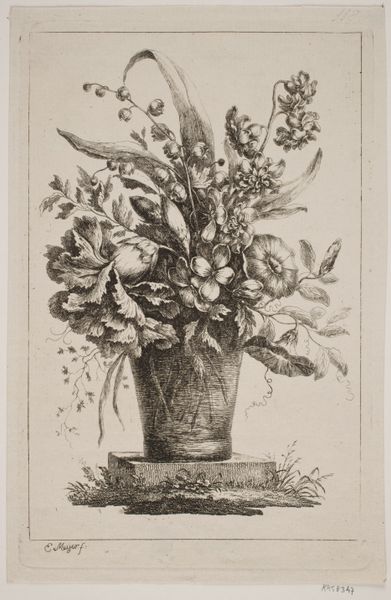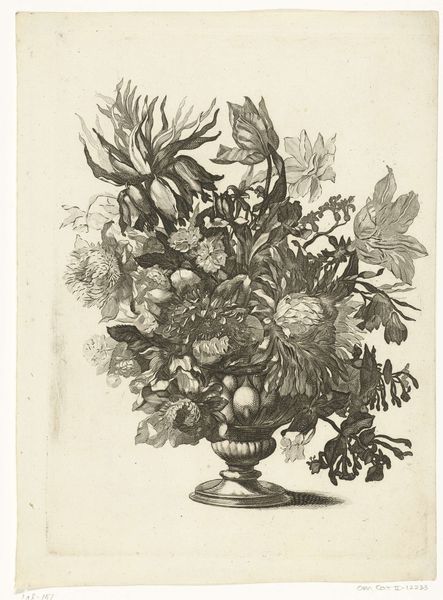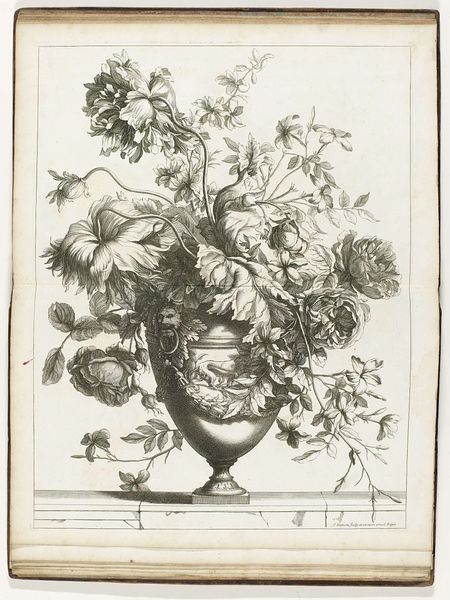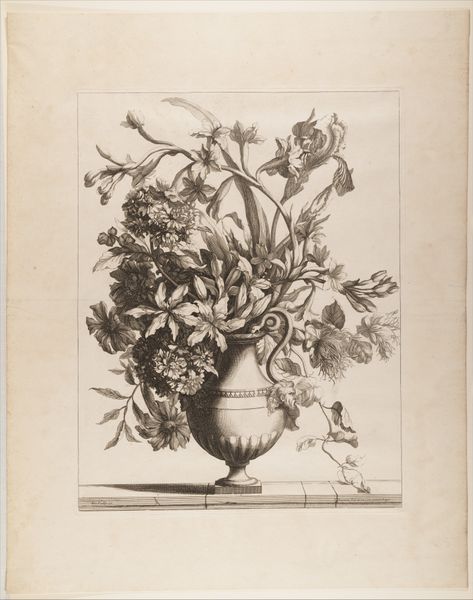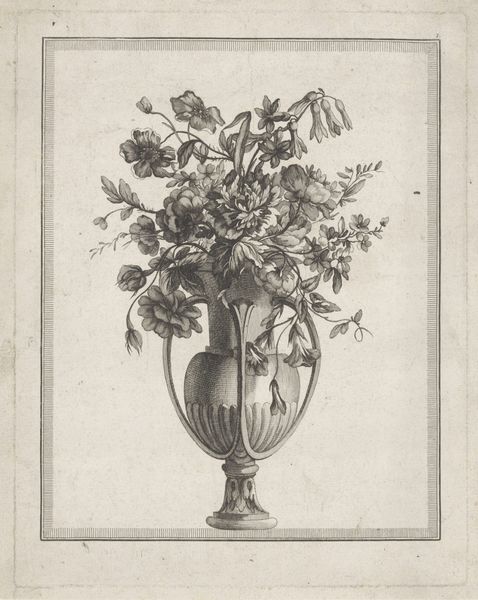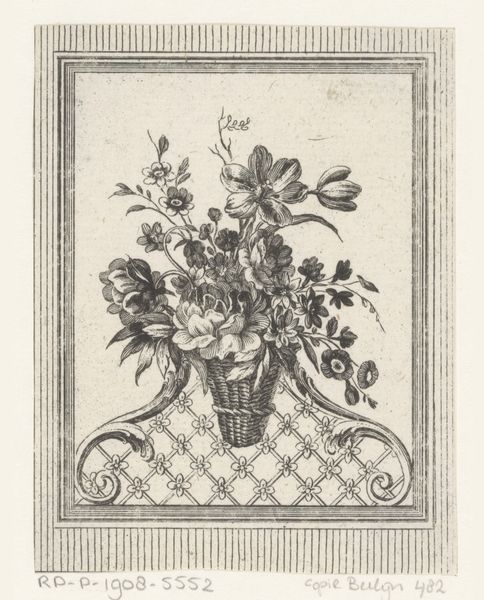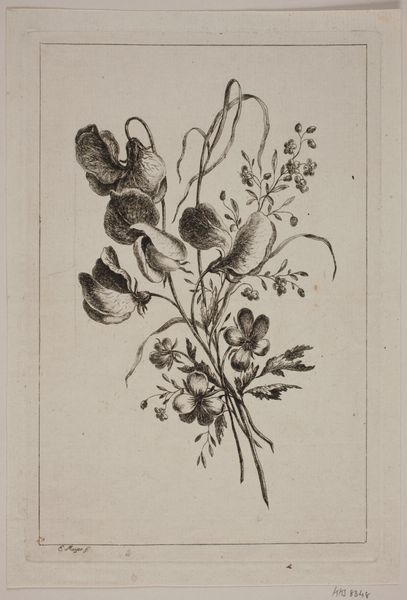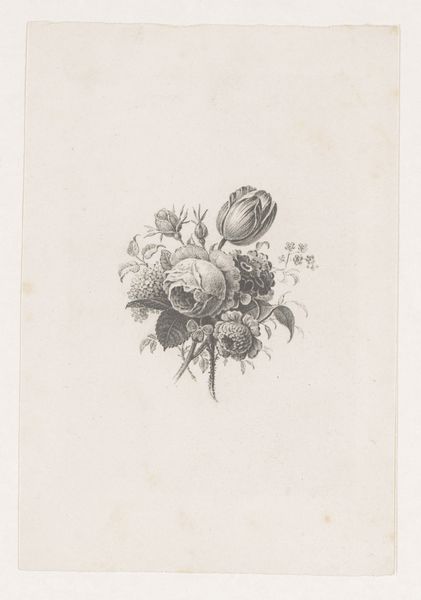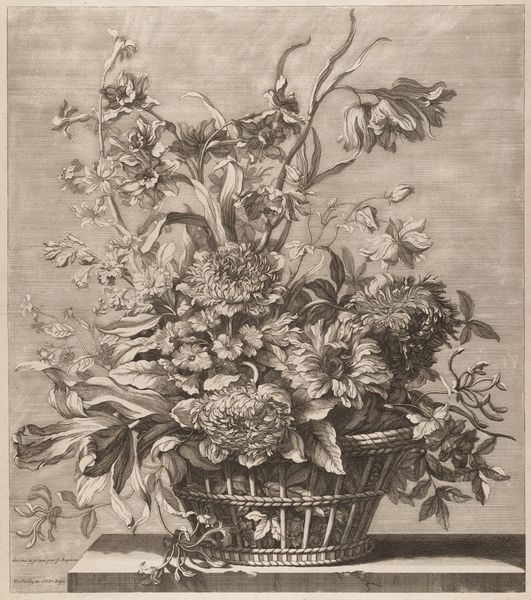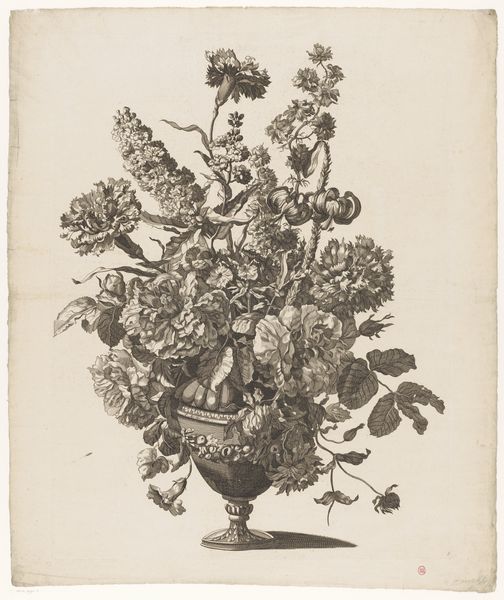
print, engraving
# print
#
engraving
Dimensions: 189 mm (height) x 122 mm (width) (bladmaal)
Editor: Here we have Elias Meyer's "Flowers in a Glass, a Rose, Auriculas, etc." an engraving done sometime between 1763 and 1809. It's a stark black and white image, quite detailed, and portrays a floral arrangement. What do you see in this piece, from your perspective? Curator: Well, looking at Meyer's print, my first thought is about the labor involved. Consider the skill and time invested in producing this engraving. Every line meticulously etched. How does that hand-made quality contrast with, say, a mass-produced image today? Editor: That's an interesting angle! I was mostly thinking about the botanicals. Curator: Right, but even the flowers depicted speak to a material reality. The act of selecting and arranging these flowers becomes a kind of status display, referencing cultivation and consumption, doesn't it? Who had access to these flowers, and what did that signify socially? Editor: I guess the choice of flowers shows a deliberate selection, reflecting access to trade routes perhaps, or a wealthy patron's garden? Curator: Precisely. And think about the circulation of prints like this. They weren’t unique objects. Multiple impressions allowed the image, and the ideas it carried, to spread. What was the economic impact of printed images? What other imagery would have circulated in conjunction? Editor: So, it’s less about the "artistic genius" and more about the means of production and dissemination of the image itself? Curator: Exactly! By examining the print’s materiality and its place in the broader social fabric, we understand its value and influence beyond just its aesthetic appeal. Editor: This has really made me consider the engraving from a completely new angle, thinking about its creation and purpose within its social context. Thank you. Curator: And hopefully it provokes you to delve deeper into that social, economic, and material context behind it, for example the labour input in that artistic expression.
Comments
No comments
Be the first to comment and join the conversation on the ultimate creative platform.
